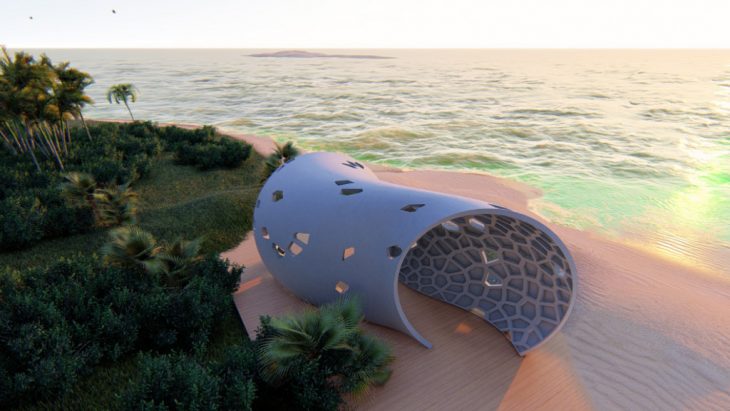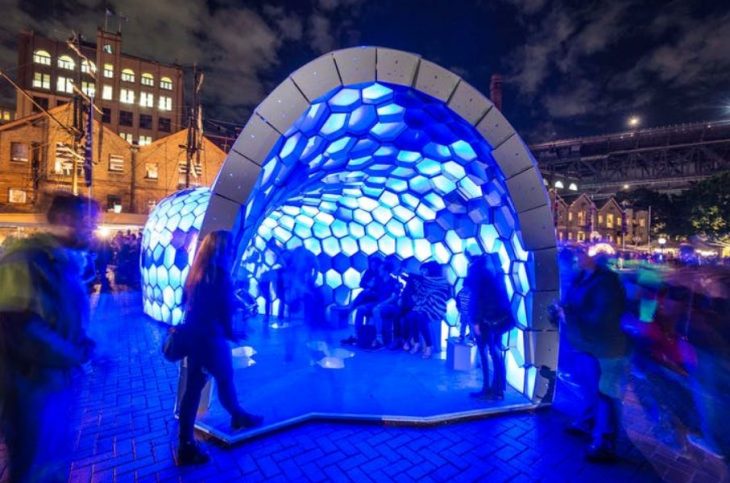
Cellular Tessellation-Sydney
Cellular Tessellation was built by Abedian School of Architecture (Bond University) students and staff, as part of the Sydney Vivid Light Festival in 2014. Located in close proximity to the iconic Sydney Harbour Bridge and Utzon’s Sydney Opera House, the pavilion was designed to offer visitors a unique experience.
Cellular Tessellations uses innovative computational form generation techniques to create and resolve the geometry of the pavilion. The shell was created from 380 unique cells in a honey-comb pattern that seem to glow from within. The project was achieved with the use of flat sheet materials which were then folded and aggregated to create the shell.
Individual cells were infilled with acrylic sheets and cladded with a weather-resistant HDPE plastic to house an impressive 200 linear meters of LED diodes.
The project was done in close collaboration with professor and architectural researcher Chris Knapp, assistant professor Jonathan Nelson and master’s degree student Michael Parsons. The temporary structure was shortlisted for the World Architecture Festival in 2014.
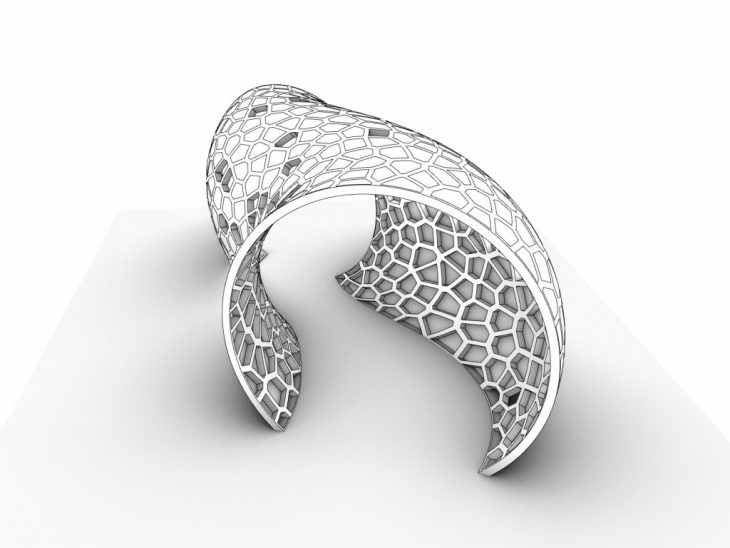
The main criteria of the design,and thus the main focus of this exercise, was to create a tunnel with Cells/ honey comb pattern with random openings on the panels.
- The design was created from 380 unique cells in pattern.
- Each shaped like a honeycomb.
- The surface has random openings.
Pseudo Code
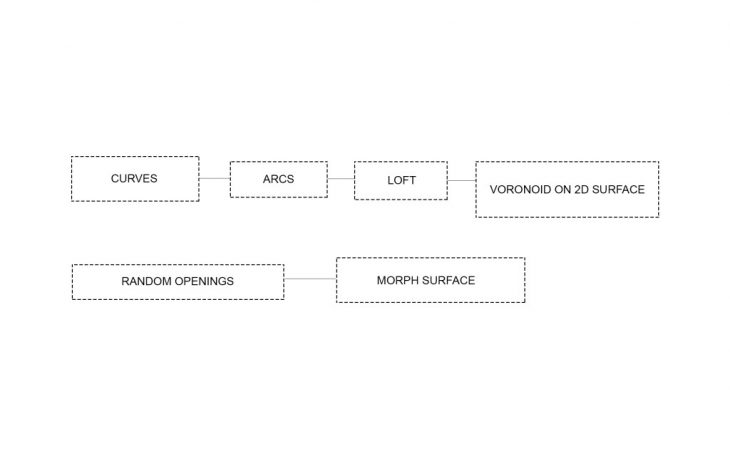
Code Development
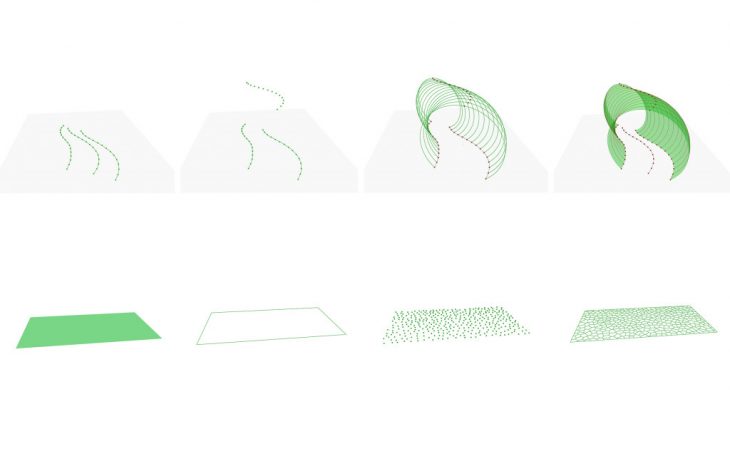
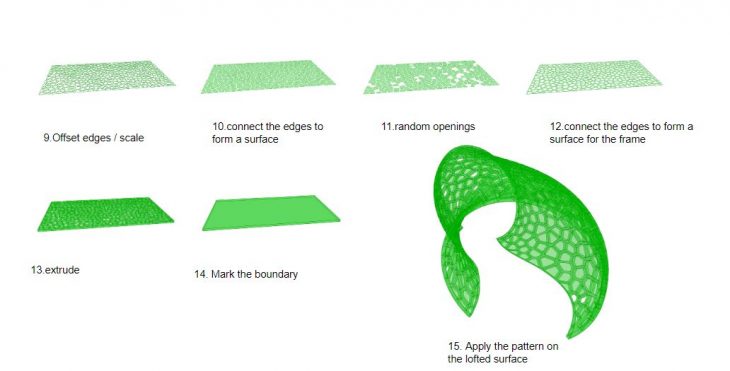
Facade main element
Cells
- The main element of the design are the Cells /honeycomb.
- The Cells were created from random points on the surface.
Facade iterations
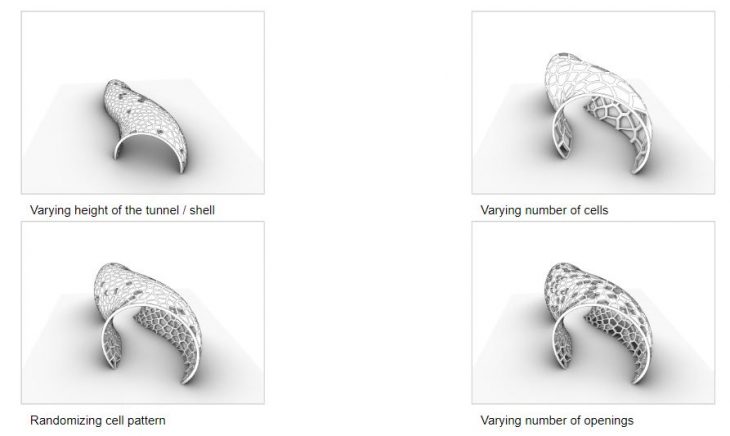
Final render
